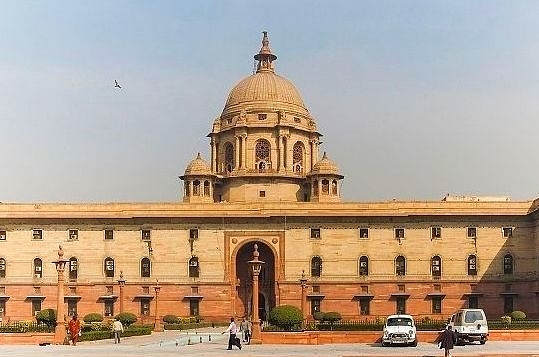
The Cabinet Secretary Is Back Amid Covid-19 Crisis. Is A Long-Overdue Refurbishment Of India’s ‘Steel Frame’ Underway?
Over time, the primacy accorded to the post of Union Cabinet Secretary began to reduce, in tandem with corrosion in the ‘steel frame’.
In its stead rose the PMO — the Prime Minister’s Office.
But a factory reset appears on the horizon.
Once upon a time, the Union Cabinet Secretary was the last word on policy matters in India.
By virtue of his position as head of the civil services, his voice, though rarely heard in public, carried an authority which brooked little disregard – especially from senior political quarters.
That is how the steel frame was run, and meant to be run: a final say on a key matter from the nation’s highest-ranking mandarin, to be taken as representing the collective wisdom of India’s bureaucracy.
But over time, that primacy accorded to the post of Cabinet Secretary began to reduce, in tandem with corrosion in this steeliest of frames.
In its stead rose the PMO – the Prime Minister’s Office. This body, which was originally intended as little more than a post office (to issue instructions and receive confirmation of compliance), metastasized over the decades into an omnipotent structure which cut everything else around it at the knees – including the post of Cabinet Secretary.
Readers will, therefore, be pleasantly surprised to note that for the first time in memory, the post of Cabinet Secretary appears to be regaining some of its old stature and worth.
Note: for the duration of the ongoing Wuhan Virus pandemic, it is Cabinet Secretary Rajiv Gauba, who has been making brief, necessary public comments on government plans and decisions.
This is precisely what was intended for the post Mr. Gauba currently holds – a voice of bureaucratic authority and reason, speaking only when necessary, and never at length, yet speaking, nonetheless.
But it wasn’t like that for decades, as a result of which, India suffered. Be it policy making, raking or faking, the weight of authority shifted from the Cabinet Secretariat to the PMO.
Senior civil servants were etiolated, and forced to function in murky shadows, at the whims of their political masters.
The protective shield of the Cabinet Secretary was weakened. Beyond a point, you either bent, or were transferred, or broken.
Delhi legend has it that the ascendancy of the PMO was necessitated in the mid-1960s under Lal Bahadur Shastri, for the most innocuous of reasons – an apparently low-brow Shastri needed a worthy bureaucratic body to manage the astral visions of his illustrious predecessor.
That apocryphal tale does not pass the smell test because Shastri was neither fool nor puppet, and smacks instead of distractive Lutyens hagiolatry.
In any case, the point is academic, because whatever the original needs or intentions, his successor fully understood the ‘virtues’ of centralizing all authority in a PMO, and that is how matters progressed over the coming decades.
By some small mercy, the heading of the Joint Intelligence Committee – simply the most powerful national security body in the land – continued with the Cabinet Secretary’s office in an ex officio capacity, but even that was just a face saver; the real power had long before shifted to the PMO.
And it is not like past Prime Ministers didn’t know the damage they were doing to the steel frame, by persisting with an enlargement and further entrenchment of the PMO; no, it was actually that they found the benefits of an overgrown PMO too many to be curtailed.
Not least was the impressive protection this bureaucratic buffer offered them, and their often questionable ways.
That is why honour must be given when due, irrespective of politics or ideology.
When Chandra Shekhar became Prime Minister in late 1990, the serving Cabinet Secretary was V C Pande. This Rajasthan cadre officer was no favorite of the Congress (who were supporting Chandra Shekhar from the outside in Parliament), having been Revenue Secretary under VP Singh during the worst of Bofors, and the German HDW submarine scandals.
He was also appointed Cabinet Secretary by Singh in late 1989. And yet, Chandra Shekhar asked Pande to continue in his post. It is another thing that Pande’s response was to shake his head and refuse, since in his opinion, the equation wouldn’t work.
That is, perhaps, why, when the Congress finally pulled the plug on Chandra Shekhar’s rump government in June 1991, his parting words struck a melancholic note.
He said that Prime Ministers might come and go, but that India would be all right as long as her steel frame remained intact.
Now, it is not yet known how far Modi will be allowed to go, in fashioning a long-overdue refurbishment of this steel frame; neither the mediocrity, which has grown to overwhelm our bureaucracy, nor those political parties which benefited from that institutionalized decrepitude, would want to see him go any further.
Repairing babudom would make both politicians and civil servants answerable, and who wants that?
Still, Gauba’s emergence from an era-long pall of administrative gloom could mark a long-awaited return to healthy roots.
If this is true, if it is indeed Modi’s intention to undo past ills, then India should welcome it.
We have suffered for far too long at the hands of a civil service which, because of willfully-incused structural deficiencies, escapes both the accountability and scrutiny it was originally meant to possess.
Let us now wait and see if this indicator is followed up by further administrative restitutions.